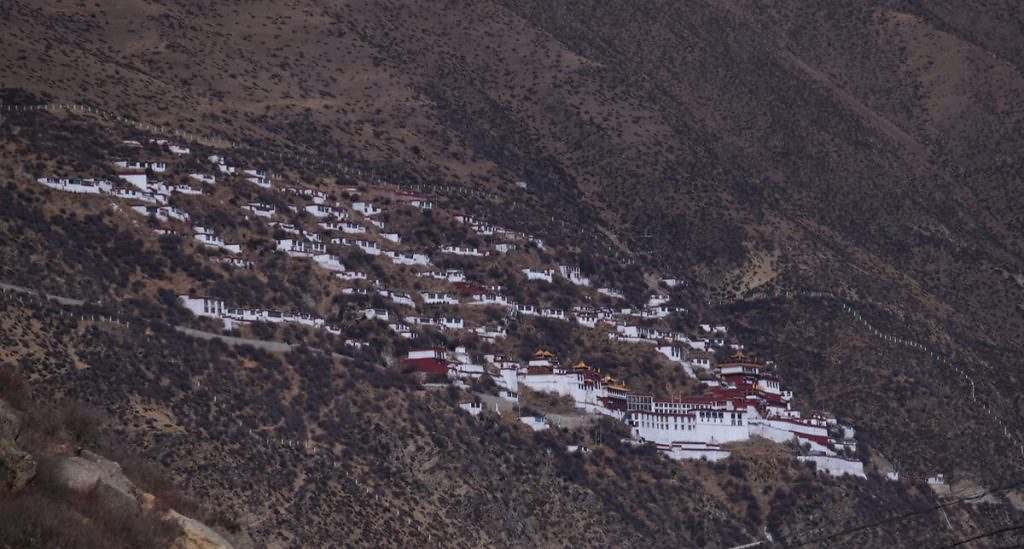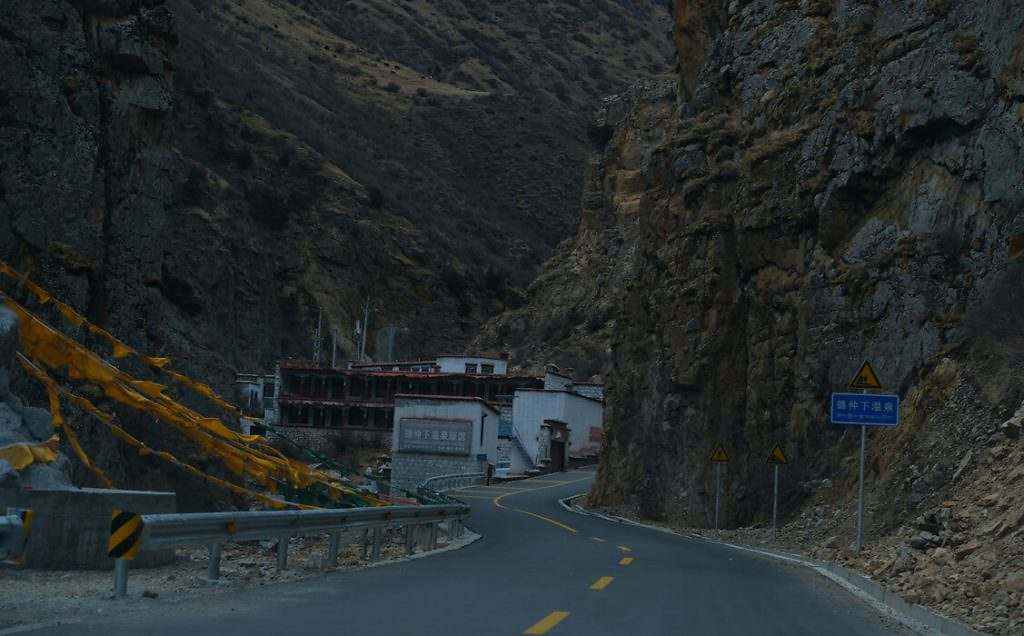The Monastery of Drigung Til is located some 72 kilometers north of Meldre Gungkar, in the valley of the Shorong Tsangpo, the principal northeast tributary of the Kyi-chu, which flows from its source above the nomad campsite of Tantuk Sumdo for over 60 kilometers to enter the Kyi-chu opposite I the ruins of the old hilltop Drigung Dzong.

There are trekking routes that lead from the upper reaches of this valley into the Nyangchu district of Kongpo and the Nyiphu district of Pome. The township of Drigung village, which has a small guesthouse, is located near the confluence, on a promontory between the Zhorong Tsangpo and the Mangra-chu estuaries.
The road to Drigung Til Monastery runs upstream from Drigung township through the deep Zhorong Tsangpo gorge to Yangri Gonpa and thence for 30 km to the township of Menpa. The monastery is located above, on the slopes of a steep diff overlooking the valley.

The name Drigung (back of the dri) refers to the distinctive contour of the cliff and its ridge, which resembles the back of a dri (‘female of the yak’). There are more than 50 buildings scattered across the upper slopes of the ridge, but three central temples act as focal points for the entire complex.
The Assembly Hall (Dukhang) contains exquisite images of Vajradhara and Shakyamuni Buddha, as well as Padmasambhava in the form of Nangsi Zilnon, Drigung Jikten Gonpo, the founder of the monastery, and Rinchen Phuntsok, who presided over its greatest development. In the center of the hall are further images depicting Jikten Gonpo and his two immediate successors, Sherab Jungne and Drakpa Jungne, who are collectively known here as Yabsesum.
The other important temples are connected by an open-air gallery. Among them, the Serkhang to the right of the gallery contains the reliquary stupa, stone footprint, and conch of Jikten Gonpo, along with images of Manjughosa, Jikten Gonpo (twice), Ksitigarbha, the protectress Apchi in her peaceful and wrathful forms, and the thrones of the Chetsang and Chungtsang incarnations.
To the northwest of the ridge is the famed Drigung Charnel Ground (Drigung Durtro) to which the dead will be brought from far-off districts of Central Tibet, Kongo, and Nakchuka for sky burial. The circle of stones on which the corpses are dis-membered, some 12 meters in diameter is said to represent the mandala of Cakrasamvara.
Around the charnel ground are stupas and a third stone footprint of Jikten Gonpo. Two recently constructed chapels are located to the left, one containing murals of the Hundred Peaceful and Wrathful Deities (which appear to the deceased during the intermediate state after death and before rebirth), and the other containing the shaven hair of the dead. The pilgrim’s circumambulation route encompasses the main temples, hermitages, and charnel grounds of Drigung.